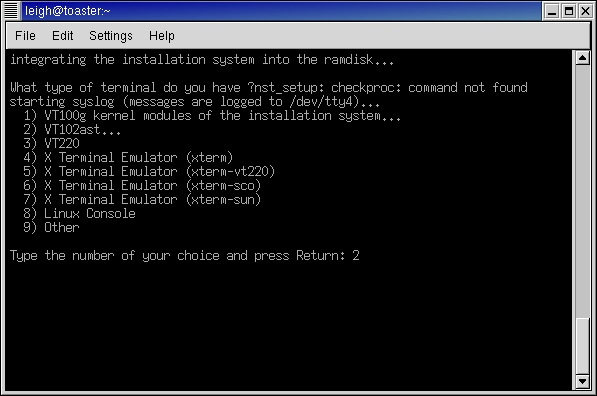
On the command line (to which you have switched with the key combination ALT+CTRL+F2), start fdisk in interactive mode: You need to delete one or several of the last partitions, replacing them with a logical partition for Linux.
#Suse create boot partition free#
You have already installed four primary partitions including one extended partition that, however, does not have any free space left.For example, delete one primary partition, replacing it with one extended partition containing logical partitions. You will have to repartition your hard disk, because there is no other way of creating any additional partitions. You have already created 4 primary partitions and no extended partitions.Furthermore, the column System shows that the second partition is an extended partition. Since the range from hda1 to hda4 is reserved for primary partitions and logical partitions start from hda5, this example shows that the first two partitions are primary partitions and the other partitions are logical partitions. Now enter the command:ĭisk /dev/hda: 255 heads, 63 sectors, 7476 cylinders A black screen with an input prompt will appear. Press the key combination ALT+CTRL+F2 (you can use ALT+F7 to return to the YaST2 installation program). For this purpose, start the installation and wait until the first graphical YaST2 menu appears (language selection). Thus, YaST2 will be able to organize the space into three suitable partitions for SuSE Linux.Ĭheck the above factors to make sure that your partition table allows the set up of a logical drive for SuSE Linux.ĭuring the installation with YaST2, you can view the information of the partition table.


When partitioning your hard disk, note the following:
#Suse create boot partition install#
You can then use YaST2 to install SuSE Linux. There may be reasons of security, ease of administration and backup, or testing, to use more than the minimum number of partitions.You want to install SuSE Linux and manually make room on your hard disk, for example, because your system's YaST2 partitioning table does not enable suitable partitioning.Īpart from describing the basics, this article also offers instructions for preparing your hard disk for SuSE Linux. For this reason, people with large disks often create a third partition, just a few MB large, typically mounted on /boot, to store the kernel image and a few auxiliary files needed at boot time, so as to make sure that this stuff is accessible to the BIOS. On Intel-compatible hardware, the BIOS that boots the system can often only access the first 1024 cylinders of the disk. So, usually one will want a second Linux partition dedicated as a swap partition. It can use swap files and/or swap partitions, but the latter is more efficient. Linux needs at least one partition, namely for its root file system. (In the BSD world one talks about ‘disk slices’ and a ‘disklabel’.)

This division is recorded in the partition table, found in sector 0 of the disk. Hard disks can be divided into one or more logical disks called partitions. It understands GPT (experimental for now), MBR, Sun, SGI, and BSD partition tables. fdisk is a menu-driven program for the creation and manipulation of partition tables. This post describes its usage and the use case when creating a new partition table.

There are different options to create or manage partitions under Oracle Linux – fdisk is one of them.


 0 kommentar(er)
0 kommentar(er)
